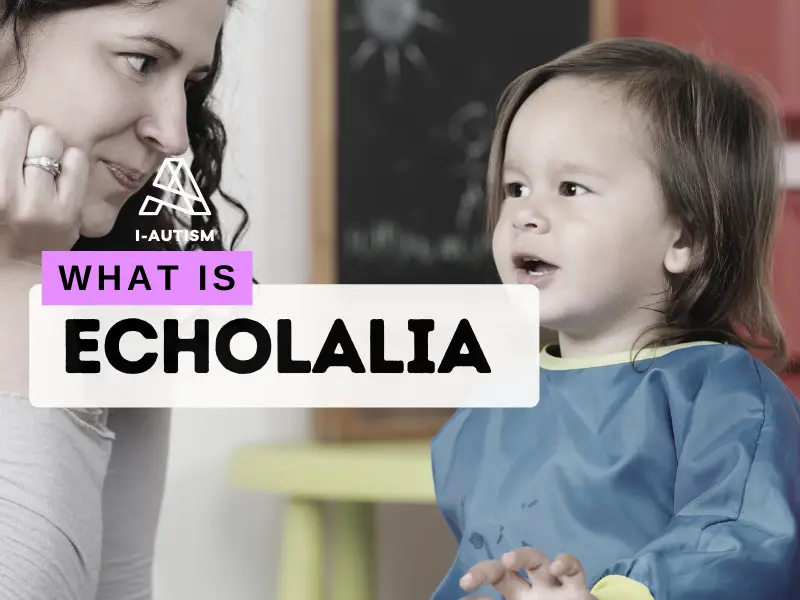Echolalia: Types, Causes, Symptoms, and Treatment | Echolalia is a speech phenomenon characterized by the involuntary repetition of words or phrases that individuals hear. While it is commonly observed in children who are learning to speak, it is also prevalent among individuals with developmental disorders, particularly Autism Spectrum Disorder (ASD). Understanding echolalia is essential for caregivers, educators, and healthcare professionals to provide appropriate support and interventions for those affected.
Types of Echolalia
Echolalia can be categorized into several distinct types, each with unique characteristics. Recognizing these types can help in understanding the context and purpose of the behavior.
1. Immediate vs. Delayed Echolalia
- Immediate Echolalia: This occurs when an individual instantly repeats something they have just heard. For example, if someone asks, “Do you want water?” the person with immediate echolalia might respond with the same question, “Do you want water?” This type of echolalia often reflects the immediate processing of auditory information.
- Delayed Echolalia: In contrast, delayed echolalia involves repeating phrases that were heard hours, days, or even weeks prior. This repetition can often seem contextually inappropriate or disconnected from the current conversation. For instance, an individual might quote a line from a movie in a completely unrelated situation, demonstrating a lack of contextual awareness.
2. Communicative vs. Semi-communicative Echolalia
- Communicative Echolalia: This type of repetition carries meaning within a dialogue. For instance, if a child repeats a question as part of an interaction, it may serve as a way to engage in conversation or respond to a query.
- Semi-communicative Echolalia: When the reason for repeating is unclear or does not seem to contribute meaningfully to the conversation, it is described as semi-communicative. This type may occur more often in individuals with significant communication challenges.
3. Unmitigated vs. Mitigated Echolalia
- Unmitigated Echolalia: In this form, the phrase is repeated exactly as it was originally spoken. The individual does not alter the words, tone, or context, which can sometimes lead to confusion in conversation.
- Mitigated Echolalia: This involves alterations in the intonation or context of the repeated phrase. The individual may change the tone or modify the original phrase slightly, indicating some level of processing or adaptation to the current context.
4. Ambient vs. Echoing Approval Echolalia
- Ambient Echolalia: This type involves repeating words or phrases heard from the surrounding environment, such as from television shows, movies, or conversations occurring nearby. It serves as a way to engage with the world through familiar sounds.
- Echoing Approval: In this variation, individuals repeat words with a specific tonal response (positive or negative) to questions posed either to themselves or another person. This can indicate their understanding of the social context or their emotional reaction to the query.
Causes of Echolalia
Echolalia can arise from various developmental and neurological conditions, and it is important to understand its underlying causes to provide effective support.
Normal Language Development
In young children, echolalia can be a normal part of language development as they learn to speak and understand language. It is often observed as a phase where children mimic sounds and phrases as a way to practice their verbal skills.
Associated Conditions
Echolalia can also be associated with several conditions that affect communication and neurological function, including:
- Autism Spectrum Disorder (ASD): A developmental disorder that significantly impacts communication and behavior, where it’s commonly observed as a means of processing language.
- Tourette Syndrome: A neurological disorder characterized by involuntary movements and vocalizations, which may include echolalic speech.
- Schizophrenia: A serious mental disorder that can affect thought processes, leading to echolalic behavior in some cases.
- Alzheimer’s Disease: A progressive neurological disorder associated with memory loss and cognitive decline, where individuals may repeat phrases as a result of memory impairment.
- Parkinson’s Disease: A degenerative neurological disorder impacting movement and speech, which can manifest as echolalia.
- Frontotemporal Dementia: A group of disorders affecting the frontal and temporal lobes of the brain, impacting personality, behavior, and language, possibly leading to echolalic speech.
- Down Syndrome: A genetic disorder that can affect communication skills and may include echolalic speech patterns.
These conditions vary widely in their symptoms, and the way the condition manifests can differ greatly among individuals, necessitating tailored interactions and treatments.
Symptoms of Echolalia
The primary symptom is the involuntary repetition of words or phrases. While this can be a normal part of development in young children, persistent echolalia at an older age may indicate an underlying condition. Key symptoms include:
- Immediate or Delayed Repetition: Individuals may repeat phrases immediately after hearing them or recall and repeat them later.
- Ambient Echolalia: Using words or sounds from the surrounding environment, such as quoting lines from TV shows or movies.
- Repetition of Questions: Instead of providing original responses, individuals may repeat questions asked of them.
- Repetitive Speech for Communication or Self-soothing: Some individuals may use echolalic speech as a way to communicate needs or as a self-soothing mechanism during times of stress or anxiety.
Diagnosing Echolalia
Diagnosis typically involves a comprehensive evaluation by a speech-language pathologist or other qualified professionals. The assessment may include:
Behavioral Observation
Monitoring the individual’s speech patterns and the contexts in which echolalia occurs is crucial. Observing how and when echolalia manifests can provide insights into its function and significance.
Developmental History
Reviewing the person’s developmental milestones and medical history can help identify any underlying conditions that may contribute to echolalia. This history can provide context for the behavior and inform treatment strategies.
Standardized Tests
Utilizing specific tests to measure language skills can help identify any underlying disorders. These assessments can evaluate the individual’s overall communication abilities and pinpoint areas that may require intervention.
Treatment Options
Effective treatment for echolalia focuses on improving communication skills and addressing the root cause of the behavior. Several strategies can be employed:
Speech Therapy
Speech therapy is a cornerstone of echolalia treatment. Speech-language pathologists work with individuals to enhance language development, comprehension, and appropriate speech usage. Techniques such as scripting (providing specific phrases for individuals to use in context) and modeling (demonstrating appropriate language use) can help reduce echolalic responses.
Behavioral Interventions
Behavioral interventions aim to modify patterns of repetitive speech. Applied Behavior Analysis (ABA) is a common approach that uses reinforcement to encourage desired communication behaviors. By rewarding appropriate speech and responding to communication attempts, individuals can learn to communicate more effectively.
Medications
In some cases, medications may be prescribed to manage underlying conditions contributing to echolalia. These can include medications for autism, ADHD, or other related disorders. Medication should be considered as part of acomprehensive treatment plan that includes behavioral and therapeutic interventions.
Communication Aids
Utilizing communication aids can significantly support individuals with echolalia in expressing themselves more effectively. Tools such as visual aids, communication boards, or electronic devices can provide alternative means of communication. These tools can help individuals convey their thoughts and needs without relying solely on echolalic speech.
Living with Echolalia
Managing echolalia involves ongoing support from family members, educators, and healthcare professionals. Here are some strategies that can help individuals with echolalia lead fulfilling lives:
Consistent Routines
Establishing consistent daily routines can provide individuals with a sense of security and predictability. Routines help reduce anxiety and create an environment where individuals feel more comfortable. Familiarity with daily activities can also minimize instances of echolalic behavior triggered by uncertainty.
Positive Reinforcement
Encouraging and rewarding appropriate speech and communication efforts can help individuals develop better communication habits. Positive reinforcement can motivate individuals to use more varied and contextually appropriate language instead of relying solely on echolalic phrases. This can be done through praise, small rewards, or other incentives when they attempt to communicate in more adaptive ways.
Educational Support
Tailored educational programs can address the specific needs of individuals with echolalia. Educators should be trained to recognize echolalia and understand its context within the classroom. Implementing individualized education plans (IEPs) can help provide the necessary accommodations and support to facilitate effective communication and learning.
Family and Peer Support
Encouraging family members and peers to be patient and understanding can create a supportive environment for individuals with echolalia. Open communication about the condition can promote empathy and awareness among friends and family, fostering a sense of belonging and acceptance.
Encouraging Social Interaction
Facilitating opportunities for social interaction can help individuals practice their communication skills in a supportive setting. Group activities, playdates, or social skills groups can provide safe spaces for individuals to engage with others, learn appropriate conversational skills, and reduce reliance on echolalic speech.
Echolalia is a complex speech phenomenon that can serve various functions, from aiding language development in children to reflecting underlying neurological or developmental conditions in older individuals. Understanding the types, causes, symptoms, and treatment options for echolalia is essential for providing effective support and interventions.
With the right approach, including speech therapy, behavioral interventions, and the use of communication aids, individuals with echolalia can improve their communication skills and enhance their overall quality of life. It is crucial for caregivers, educators, and healthcare professionals to work collaboratively to create a supportive environment that fosters understanding and acceptance.
By recognizing the value of echolalia as a form of communication and providing appropriate strategies for managing it, we can empower individuals to express themselves more effectively and navigate their social worlds with greater confidence. With ongoing support and tailored interventions, individuals with echolalia can thrive and achieve their full potential.



